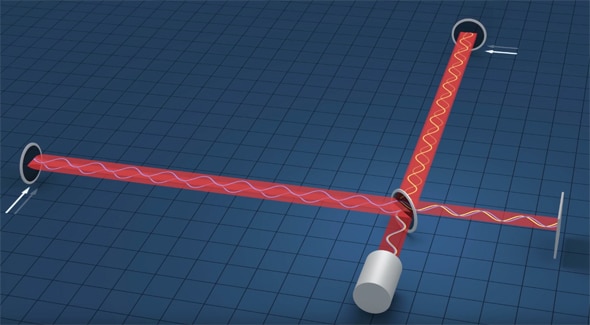Create a free profile to get unlimited access to exclusive videos, sweepstakes, and more!
Shaking the Fabric of Reality

Hands down, the biggest science story of 2016 was the detection of gravitational waves. Even the discovery of the planet Proxima Centauri B takes second seat to it.
Gravitational waves are ripples in the very fabric of space-time, created when massive objects are accelerated. The existence of these waves in reality was a natural byproduct of Einstein’s relativity equations, but their detection has been difficult. That’s because the waves are incredibly weak, at least in everyday life. To get waves strong enough to detect, you need truly massive objects undergoing intense acceleration.
The Laser Interferometer Gravitational Wave Observatory, or LIGO, was designed to detect gravitational waves, and in 2016 it finally did. Even then, it took the merging of two enormous black holes (with combined mass of 65 times that of the Sun!) accelerated to a large fraction of the speed of light for LIGO to detect the waves.
It was a feat of extraordinary human achievement. How extraordinary? My friend Derek Muller, creator of the Veritasium science videos, went to LIGO to talk to scientist Rana Adhikari to put it all in perspective (with the help of my friend and fellow Bill Nye Saves the World writer Teagan Wall).
Note: Before watching, I recommend you read my article about the observation of the first gravitational waves, and a follow-up when LIGO detected its second merging black hole pair; they’ll give you background on how this works.
He uses the word absurd, and it really does fit. The technical aspects of this experiment are so sophisticated and sensitive that it almost sounds like Star Trek tech. Yet here we are, doing it. And we’re not done yet: More detectors are coming online, and soon we may have them in space as well, increasing our sensitivity to these waves by huge leaps. It’s possible we may eventually be able to detect literally every binary black hole system in the Universe. And the cosmos is swimming in a background of gravitational waves coming from all directions; my pal Chiara Mingarelli is working on a ridiculously sophisticated system to detect that noisy background, too.
We receive a lot of information from space, but it comes in only a few flavors: light waves, meteorites, subatomic particles. With the discovery of gravitational waves, an entirely new way to view the Universe has come online. It was astonishingly difficult to get to this point, but human curiosity is an immensely powerful force. It accelerates our minds. Maybe Newton and Einstein never put equations to that, but it’s a fact of science nonetheless.














